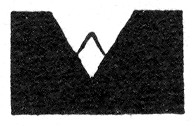You are here: Home > Firearms > British Military Longarms > Enfield
Written by: David Minshall
Target shooting by Rifle Volunteers in the National Rifle Association (NRA) matches was primarily with their arm of issue, which in the 1860s was the Pattern 1853 Enfield rifle. Following enquires to the NRA, in April 1861 Captain Edmond H. St. John-Mildmay, the Secretary, sought a ‘definition’ of the rifle. He wrote to Major-General Charles Hay, the Commandant and Inspector-General of Musketry, at the School of Musketry, Hythe (1853-1867). Hay responded and the NRA distributed the correspondence in May 1861 which was published in numerous newspapers of the time. Mildmay’s brief covering note to the newspaper editors, and Hay’s definition follow.
Major–General Hay’s Definition of the Long Enfield Rifle, 1853
As many enquiries are made at this office with regard to the definition of an Enfield rifle, pattern 1853, I am desired by the Council of the National Rifle Association to request the favour of your inserting in your paper the following letter from Major-General Hay on this subject.
EDMOND H. St. JOHN MILDMAY
National Rifle Association Office, May 8 1861
Hythe, 30th April 1861
My Dear Mildmay,
You ask me for a definition of the Enfield Rifle, pattern 1853, and a very fair question it is, but one which perhaps would have been better put to, and more correctly answered by, Colonel Dixon, the fountain head of Enfield rifle manufacture. I feel bound, however, to give you the definition which would guide me, if called on to decide the question as umpire.
The Enfield Rifle, as at present manufactured, retains the broad principles of a soldier’s rifle musket as issued in 1853; but, besides improvement in its manufacture, it has been subjected to several modifications since that date; for instances, the grooving has been made progressive in depth instead of uniform, and the pattern of sights has been improved. A bonâ fide Enfield Rifle, in the terms of out byelaws and regulations, would, however, embrace such modifications and improvements.
I will now state what I consider to be the broad and important principles involved in a long Enfield Rifle, a departure from which would disqualify a competitor.
Bore, .577 inch
Barrel. – Length, 39 inches; weight, 4lbs. 4oz. to 4lbs. 6oz.
Grooves. – Three in number. Depth, .014 if uniform, or .005 to .015 if progressive; breadth, .262. One turn in 6ft. 6in.
Pull-Off of Trigger. – 7lb to 8lb. (reduced to 6lbs. by byelaws, and therefore admitted)

Sights. – Of the ordinary description. The centre of the sliding bar defined by a V, not by a vertical line of any sort. Foresights strong; the cross section nearly triangular; top sloping slightly towards the muzzle; the base not weakened by undercutting.
The weight of almost all the barrels I have from time to time weighed has been 4lbs. 4os., but I have given a margin of 2oz., to be on the safe side.
The ammunition of course will be uniform, viz., that of the Government.
I remain yours very truly,
CHARLES HAY